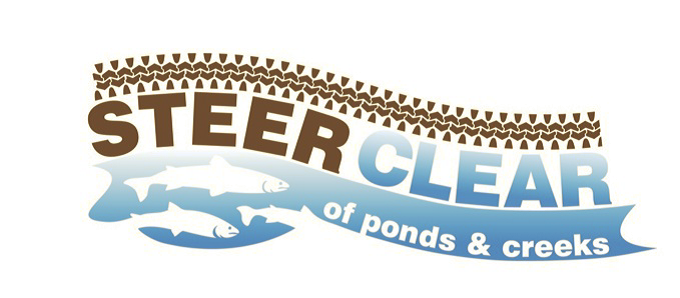BRBC March 12th Quarterly Forum Summary: Part 2
The Bow River Basin Council Quarterly Meeting and Networking Forum was held on March 12th at the TransAlta Auditorium. This sold out event brought together participants and speakers from throughout the southern Alberta water community. Part 1 was published on April 1st and you can read the first entry here.
Citizen Science
Dinah Duke from the Miistakis Institute discussed Citizen Science or Public Participation in Scientific Research (PPSR). Two Misstakis projects were highlighted in the presentation:
• Road Watch in the Pass utilizes local knowledge of animal movement across Highway 3 to help reduce large mammal mortality rates.
• The Leave it to Beavers Watershed Stewardship project is studying the introduction of two beaver families to the Ann & Sandy Cross Conservation Area southwest of Calgary. Citizens were asked to collect data before and after the reintroduction of beavers to demonstrate their role in watershed stewardship. This project also combined citizen participation with a formal monitoring program to study riparian health inventories and water quality.
Duke noted some of the advantages and disadvantages that arise from citizen science. Citizen Science provides a number of benefits including allowing citizen engage in the decision making process and providing data that would be challenging and expensive to collect via conventional research methods. However, there are challenges with respect to recruitment and retention of participants including reconciling competing goals, obtaining needed resources, sustainability, evaluating and measuring success, and measuring conservational goals. If you are interested in participating one of the programs offered visit the Miistakis Institute website or follow the Miistakis Institute on twitter.
To explore additional PPSR projects check out: Audubon Bird Count, Zooniverse, Fold It, FLOCAST, and ASFPRM.
Forestry Perspective on Watershed Management
A representative from Spray Lakes Sawmills provided a presentation on the complexity of managing the headwaters from a forestry perspective. While a common recommendation is to protect the headwaters, the presenter argues that this notion is overly simplified. Rather than protect the headwaters, the presenter argues a better approach might be to manage the headwaters.
After presenting historical weather data the presenter argued that weather, and not logging, is the trigger for extreme events. The presenter offered alternative water management recommendations:
- Instead of ‘protecting the headwaters’ a better approach might be to ask `how do you manage where you want to go’? Simply protecting a forest does not allow for natural forest renewal events and allowing a forest to become unnaturally old may exacerbate water management issues.
- Define management objectives: it’s difficult to manage forest for flood and drought but a diverse, healthy forest could help protect against both while also providing habitat, biodiversity, aesthetic appeal and recreational spaces.
To read more about forest management at Spray Lakes download Spray Lake Sawmills: 5 Year Stewardship Report Years 2007-2012
Watershed Stewardship, Riparian Lands and Wetlands
Ghost Waiperous Alliance Society (GWAS)
Marina Krainer from the Ghost Waiperous Alliance Society (GWAS) discussed “Source Water Education and Protection Initiative”. Krainer presented research about the area and research has found that the land is becoming less ‘spongy’ (click here to read the reports initiated the the GWAS)

Example of crossing design sign
The sustainable trail and crossing design project collaborated with user groups, Cows and Fish, and erosion control specialists to identify priority restoration sites, and create signs to remind users groups to stay on marked trails and use bridges rather than crossing bodies of water.
- The GWAS has also been repairing bridges in the area. Krainer noted that there are a number of legal hurdles when constructing bridges. Liability is held by the group that builds the infrastructure and it is a considerable expense for their group. A fee for user groups has been proposed but the proposed rates are not enough to offset the costs incurred by the GWAS.
- A bioengineering Workshop is scheduled for May 9-11th. Check the Ghost Waiperous website for updates.
Elbow River Watershed Partnership (ERWP)
The ERWP is a ‘hands-on’ organization that supports and encourages stakeholders in the Elbow River Watershed to protect and enhance water quality and quality. Presenter Mike Murray outlined the breadth of ERWP projects that range from freshwater monitoring field study program and water management plan to a photography project intended to capture the natural beauty of the region. Murray highlighted some the ERWP successes including:
- Cattle Setback Program: This program will allow local ranchers to access funds for fencing projects that isolate cattle from direct access to water areas, thereby reducing the risk of environmental problems.
- Water Management Plan: the full report can be read here.
- Riparian Health Inventories in the Upper Elbow Watershed (in partnership with Cows and Fish): This project involves repeating riparian health inventories conducted in the upper Elbow watershed (McLean Creek Public Land Use Zone) in 2007 by Cows and Fish, as well as undertaking riparian health assessments at identified hotspots.
To read more about these projects visit the EWRP website.
Western Sky Land Trust
Western Sky Land Trust provides critical watershed protection in southern Alberta and works to conserve open and natural landscapes that have important natural, agricultural, scenic, recreational and heritage values.
- Bruce Islands: is made up of three islands on the Bow River totalling over 60 acres.
- Highwood Ridge Farm: is 133 acres located along the Highwood River and consists falls within a key wildlife and biodiversity zone designated by Alberta Environment and Sustainable Resource Development.
- The Bow & Beyond Initiative: started in 2010, this project is now in its second phase as staff and volunteers are working to conserve this area.
